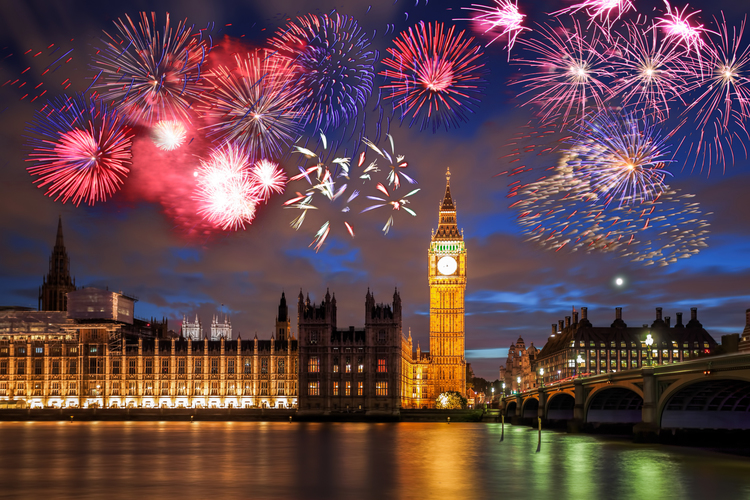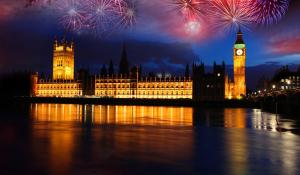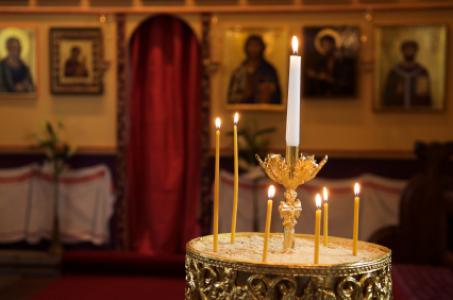
Best Comet of 2025?
C/2024 G3 (ATLAS) has already become very faintly visible to the naked eye for observers in the Southern Hemisphere.
December 31 is known as Hogmanay in Scotland and New Year's Eve in England, Wales and Northern Ireland. It is the last day of the year, according to today's calendar, the Gregorian calendar.
New Year's Eve is not a public holiday. Businesses have normal opening hours.

New Year's Eve fireworks over Big Ben in London.
©iStockphoto.com/extravagantni
3 surprising facts about New Year’s 2025
Many people spend most of December 31 quietly. They may spend time outdoors, reading the reviews of the last year in newspapers or resting in preparation for the New Year's Eve parties that begin in the late afternoon or evening. People who host parties may spend a large part of the day preparing food and arranging drinks. In the evening, New Year's Eve parties usually go on for many hours, well beyond midnight. Some, particularly young people, may choose to spend the evening in pubs, clubs or discos. Although there are many who celebrate the event responsibly with moderate amounts of alcohol, some celebrate the event with large amounts of alcohol, which can lead to fights and other acts of foolishness in the early hours of the morning.
Just before midnight, people turn on a radio or television to see the countdown of the last few minutes of the old year and the display of fireworks just after midnight. At this point, people often hug and kiss each other, even strangers, and many start singing Auld Lang Syne, a poem written by Scottish poet Robert Burns. In Scotland, the Hogmanay celebrations may last for one or two more days, as both January 1 and 2 are bank holidays. In the rest of the United Kingdom, only January 1 is a bank holiday.
In Scotland and some parts of northern England, people may spend the last few hours of December 31 preparing to be or receive first-footers. The first person to cross the threshold of a house after the start of the new year is a first-footer. First-footers are usually men and in different areas have different physical characteristics, such as blond or dark hair, bring different kinds of luck to the household in the coming year. They bring gifts, such as whiskey, shortbread, coal and fruit cake, which are then shared among all of the guests.
December 31 is not a public holiday. However, schools are closed for the Christmas holidays and many people have a day off work or leave earlier than usual. Stores and post offices are generally open, but may close earlier than usual. Public transport systems may run to their usual schedule, but they may have a reduced service or close down totally in the late afternoon or evening.
In some big cities, public transport services resume services around midnight to enable people attending large scale events to return home safely. Entrance to pubs, clubs and discos may be by invitation or a pre-booked ticket only. Major train and bus stations may be congested as many young people travel to spend New Year's Eve and Day with friends.
Midwinter celebrations have been held by the people of the British Isles since ancient times. These often included parties, special food and large fires to "tempt" the Sun to return. After the introduction of Christianity, some aspects of these were included in celebrating Jesus' birth at Christmas. However, this was resisted by the Scottish Presbyterian church. For this reason, Hogmanay was the main winter festival in Scotland until the 1970s. Both Christmas and Hogmanay are now celebrated in Scotland.
2020 or 2021: When do decades start?
One of the most widely known symbols of New Year's Eve is the image of the Clock Tower at the Palace of Westminster, in London, counting down the last minutes of the old year. The first chimes of Big Ben, the bell housed in the Clock Tower, in the new year are broadcast live on radio and television. This is followed by a spectacular fireworks performance, often centered on the London Eye, which is claimed to be the largest Ferris wheel in Europe.
| Year | Weekday | Date | Name | Holiday Type |
|---|---|---|---|---|
| 2020 | 木曜日 | 12月31日 (木) | New Year's Eve | Observance |
| 2021 | 金曜日 | 12月31日 (金) | New Year's Eve | Observance |
| 2022 | 土曜日 | 12月31日 (土) | New Year's Eve | Observance |
| 2023 | 日曜日 | 12月31日 (日) | New Year's Eve | Observance |
| 2024 | 火曜日 | 12月31日 (火) | New Year's Eve | Observance |
| 2025 | 水曜日 | 12月31日 (水) | New Year's Eve | Observance |
| 2026 | 木曜日 | 12月31日 (木) | New Year's Eve | Observance |
| 2027 | 金曜日 | 12月31日 (金) | New Year's Eve | Observance |
| 2028 | 日曜日 | 12月31日 (日) | New Year's Eve | Observance |
| 2029 | 月曜日 | 12月31日 (月) | New Year's Eve | Observance |
| 2030 | 火曜日 | 12月31日 (火) | New Year's Eve | Observance |
While we diligently research and update our holiday dates, some of the information in the table above may be preliminary. If you find an error, please let us know.

C/2024 G3 (ATLAS) has already become very faintly visible to the naked eye for observers in the Southern Hemisphere.

New Year's Day marks the start of a new year in the Gregorian calendar, the official calendar used in the United Kingdom.

January 2 is an annual bank holiday and the last day of the Hogmanay (New Year) celebrations in Scotland.

Orthodox Christians in the United Kingdom mark the start of a new calendar year on either January 1 or 14 in the Gregorian calendar.